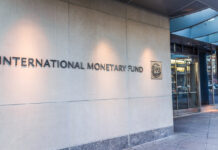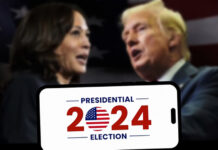Polling results do not demonstrate that Clinton and Trump are nearly equally reviled, notwithstanding the ubiquitous media narrative. To say that voters distrust both candidates confuses two possibilities: that people are uncertain of Clinton’s policy commitments, and that they are certain that Trump is committed to dangerous policies.
One of the most widely accepted media storylines of the 2016 US presidential election is that both of the major-party candidates are widely disliked. While it is easy to find evidence seeming to support the idea that many people are unhappy with a choice between Hillary Clinton and Donald Trump, however, the conclusions drawn from such evidence can be highly misleading.
In June, for example, The New York Times published, “Clinton and Trump Have Terrible Approval Ratings. Does It Matter?” That article provided a welter of data showing that Clinton and Trump had historically low “net favourably ratings”. Such ratings reflect the number of “favourable” responses reduced by the number of “unfavourable” responses for each candidate.
As the Times article pointed out, however, Clinton’s and Trump’s low net favourability ratings might have nothing to do with any unique rejection of those two candidates by the public at large. In an increasingly partisan political environment, more voters in 2016 view the other party’s nominee as truly bad, not merely as the less qualified of the two available candidates. For example, whereas people in 1976 were evenly split between Jimmy Carter and Gerald Ford, few thought that the other party’s candidate was dangerous. Today, when people are more politically polarised and thus hold harsher views of their opponents, the resulting negative ratings will pull down the net favourability numbers for both candidates.
Similarly, the Gallup polling organisation in July published “One in Four Americans Dislike Both Presidential Candidates”. That press release led with a contrast of the number of people who have unfavourable views of both candidates in the 2012 and 2016 elections. Whereas only 11 percent of people rated both Barack Obama and Mitt Romney negatively four years ago, today the same poll shows 25 percent of the respondents disliking both Clinton and Trump.
Everyone should know, however, that a person who says “I have an unfavourable view of this candidate” is actually providing very little information to a pollster. For example, we know nothing about the intensity with which a person dislikes that candidate.
To its credit, Gallup has tried to elicit more than a mere up/down response by asking questions that attempt to measure intensity. Their “scalometre” uses a ten-point scale to try to measure respondents’ feelings along a continuum from very positive responses (+5) to very negative responses (-5). Gallup deems scores of -4 and -5 to be “very negative,” and it found that “only 4% of the country has a very unfavourable view of both candidates, indicating that even among those who dislike both candidates, one candidate is more strongly disliked than the other.”
Gallup, therefore, did publish polling results that cut against the established media narrative. Even so, the US press continues to focus almost exclusively on favourability ratings, not on Gallup’s intensity ratings or similar results. Indeed, Gallup’s report itself led with the simplistic approach and casually mentioned that the scalometre results would be discussed much later in the press release. Who knows how many people bother to read that far? The evidence strongly suggests that most journalists and headline writers do not.
A similarly misleading analytical approach shows up in a polling analysis that the Pew Research Center released in July, “2016 Campaign: Strong Interest, Widespread Dissatisfaction.” Pew notes: “In another sign of voter discontent, large numbers of the supporters of both Trump and Clinton view their choice as more of a vote against the opposing candidate than an expression of support for their candidate.”
This is apparently meant to lend some support to the idea that voters are generally unhappy with both candidates, that is, that they are choosing the lesser of two evils – and that voters view both evils as especially super-evil this year.
That could be true, but there is no way to know, at least based on Pew’s report. After all, consider a person who thinks that Clinton is a very good candidate and that Trump is a very bad candidate. This person receives a call from Pew and agrees to be interviewed. Asked if he is voting more “for” Clinton or “against” Trump, this person concludes that what makes Trump a scary candidate – his appeals to bigotry, his misogyny, his unpreparedness for office, his serial lies – are more than enough reason to vote against Trump.
In that case, the voter might indeed have been willing to vote for someone whom he truly dislikes – say, Senator Marco Rubio – if the other choice was Donald Trump. But with Hillary Clinton on the ballot, this voter is fortunately able both to vote against a candidate he fears and in favour of a candidate he genuinely admires.
Where, then, is the logic behind the claim that voting against one candidate is proof that votes for the other candidate are cast reluctantly? This is not to say that it is impossible for a person to view this year’s choices as both being terrible, but it is simply a fact that the polling questions do not tell us enough to know whether that is true.
Both Gallup and Pew are high quality polling organisations, and they are deservedly viewed with respect. The problem is that they present their results in ways that feed established media narratives, whereas the evidence on which those conclusions are based is at best ambiguous.
More importantly, what matters most is why voters hold positive or negative views, even intensely held views. Understanding the difference between the negative poll ratings of Clinton and Trump is critical, because what people dislike about the candidates differs. These differences, in turn, provide insights into the candidates’ possible performance as president.
In June of this year, in an analysis of the media’s narrative about both candidates having “high negatives”, I wrote that “Hillary Clinton on her worst day is better than Donald Trump on his best.” I went beyond the positive/negative dichotomy and explored what it means when people use words like “distrust” or “dishonest” to describe the candidates. Even though poll results show that many people are willing to call Clinton “dishonest” or to say that they do not trust her, while a not-that-much-higher percent say the same things about Trump, this simply misses the ambiguous and changing ways in which people use those words.
People who say that they do not trust Clinton have expressed worries that she might change her position on one or another issue. For example, supporters of Bernie Sanders could point to her speeches to Goldman Sachs and say, “When push comes to shove, I can all too easily believe that she’ll go soft on Wall Street.” In other words, some people on the left do not trust Clinton to hold to a position that she currently claims to hold. When asked, therefore, they might say that they think she is being dishonest.
And it is fair to wonder what any candidate will do after being elected. Although I have come to believe that Clinton’s changes in policy views over time are based on her understanding that times have changed, and that she has assessed a growing body of evidence on which to base her new views, I could be wrong. She has certainly been pushed by political considerations to change her substantive policy commitments, with an intensifying turn against neoliberalism in the US and the UK making voters unwilling to accept more of the trickle-down policies that Republicans and (Bill) Clinton Democrats championed.
Hillary Clinton, therefore, could either be a genuine convert or a political opportunist. But if she were merely co-opting Sanders’ positions with the intention of abandoning them later, why would she have taken consistent political heat during the primaries by continuing to differ from Sanders? Why, for example, would she have bothered to take a position that fell short of Sanders’ support for a no-exceptions $15-per-hour minimum wage?
To be extremely clear, I strongly support the movement to increase the minimum wage to $15 per hour, and I was thus disappointed by Clinton’s decision not to support that higher level. The point, however, is that she did not act like someone who simply says whatever is necessary to win, all the while secretly holding different views and intending to betray her gullible supporters.
On the other hand, when Clinton is president, there will be times when she will compromise, and the “Clinton cannot be trusted” people will flood the internet with criticisms and gloating. They might be right, or they might simply misinterpret the need for President Clinton to make compromises with a rigid opposition party as proof that she was never really committed to her professed views.
When Barack Obama came into office, a lot of people thought that he was much more liberal than he has turned out to be. I was one of the people who frequently complained that Obama did not drive a hard enough bargain, and it was important to distinguish rightward moves that Obama made under duress from those that he took seemingly of his own volition (such as his surprise announcement that he was freezing the pay of federal workers, for which he received nothing in return from Republicans). Especially on economic issues, it took a lot of liberals quite a long time to accept the fact that Obama was not the progressive that they had hoped he would be.
So, if “trust” is an issue, one version of distrusting someone is suspecting that he or she will disappoint you at times in the future. But another version of distrust is not believing that a person intends to do the right thing – or that he even knows what the right thing is.
[Note that I am not dealing here with the supposed scandals that people attribute to Clinton, because none of those much-hyped feeding frenzies have turned out to have any meaningful content. Interested readers might in particular want to read this summary of the FBI’s recent exoneration of Clinton regarding her use of a private email server.]
When most people say that they distrust Donald Trump, they cannot possibly be expressing concern that he is taking one position now but will betray them later. After all, Trump is obviously making things up as he goes along, and he changes his policy statements from moment to moment. Trump makes suckers out of people who believe him every day, as his wild back-and-forth on immigration policy in late August and early September – seeming to soften his views, then hardening them, then carving out ad hoc exceptions at a national defence forum in New York – vividly demonstrates.
Those are certainly reasons to distrust Trump, but they are very different from expressing worry that Clinton might not carry through on, for example, her promises to provide free higher education to most American students. “I don’t trust Clinton” can mean that a person has a nagging feeling that she might not fight hard enough on progressive issues. “I don’t trust Trump” most likely means that a person cannot even figure out what Trump means from one minute to the next, which makes it nearly impossible to know what he would do if elected.
More importantly, a person who applies the word “distrust” to Trump might also be expressing fear of what Trump actually will do as president. After all, despite the farce of Trump’s ever-changing policy statements and self-contradictions, there do seem to be some things that he wants to do, even if he is not sure how he would do them. He might or might not create a “deportation force” to evict millions of families from the United States, for example, but Trump certainly seems intent on making their lives miserable.
Similarly, while Trump might or might not try to build his ridiculous wall on the US-Mexican border, he would definitely continue to stoke bigotry and divisiveness in the country. In fact, we can be sure that he will do that even after he loses the election.
In short, polls tell us nothing about why people trust or distrust candidates, because the concept of trust is so complex. Does it really matter whether a voter says, “I distrust Trump because I know he’ll do the wrong thing,” or “I trust that Trump will always make the wrong choice”?
All of which means that there are reasons why people might look at Clinton and say, “You know, I’m not sure what she’ll do as president”, using the word “distrust” as a shorthand. I do not think that there is any reason to emphasise those doubts about Clinton more than we would for any other politician who lives in the real world, but I certainly respect people who feel less confident than I do about where she will spend her political capital and where she will draw lines in the sand. On the other hand, even though I am not sure what Trump would do, I trust that it would be terrible.
But the larger narrative, in which people are supposedly equally disgusted with the presidential choices offered up by both parties, is simply a leap beyond the evidence. Repeating that narrative makes two very different candidates look unjustifiably similar.
About the Author
 Neil H. Buchanan is an economist and legal scholar, a professor of law at The George Washington University and a senior fellow at the Taxation Law and Policy Research Institute, Monash University, Melbourne, Australia. His research addresses budget deficits, the national debt, health care costs, and the future of Social Security.
Neil H. Buchanan is an economist and legal scholar, a professor of law at The George Washington University and a senior fellow at the Taxation Law and Policy Research Institute, Monash University, Melbourne, Australia. His research addresses budget deficits, the national debt, health care costs, and the future of Social Security.





































































